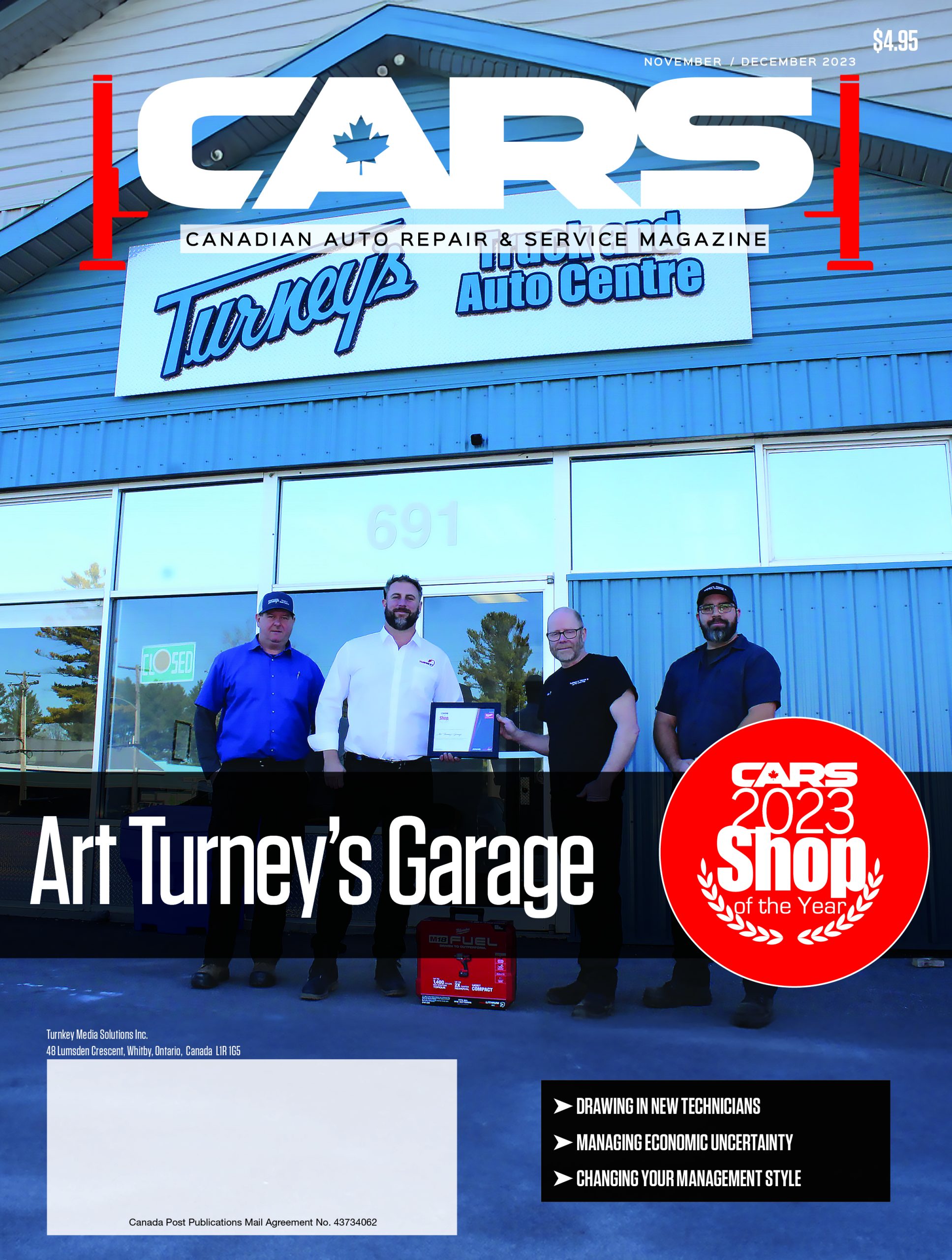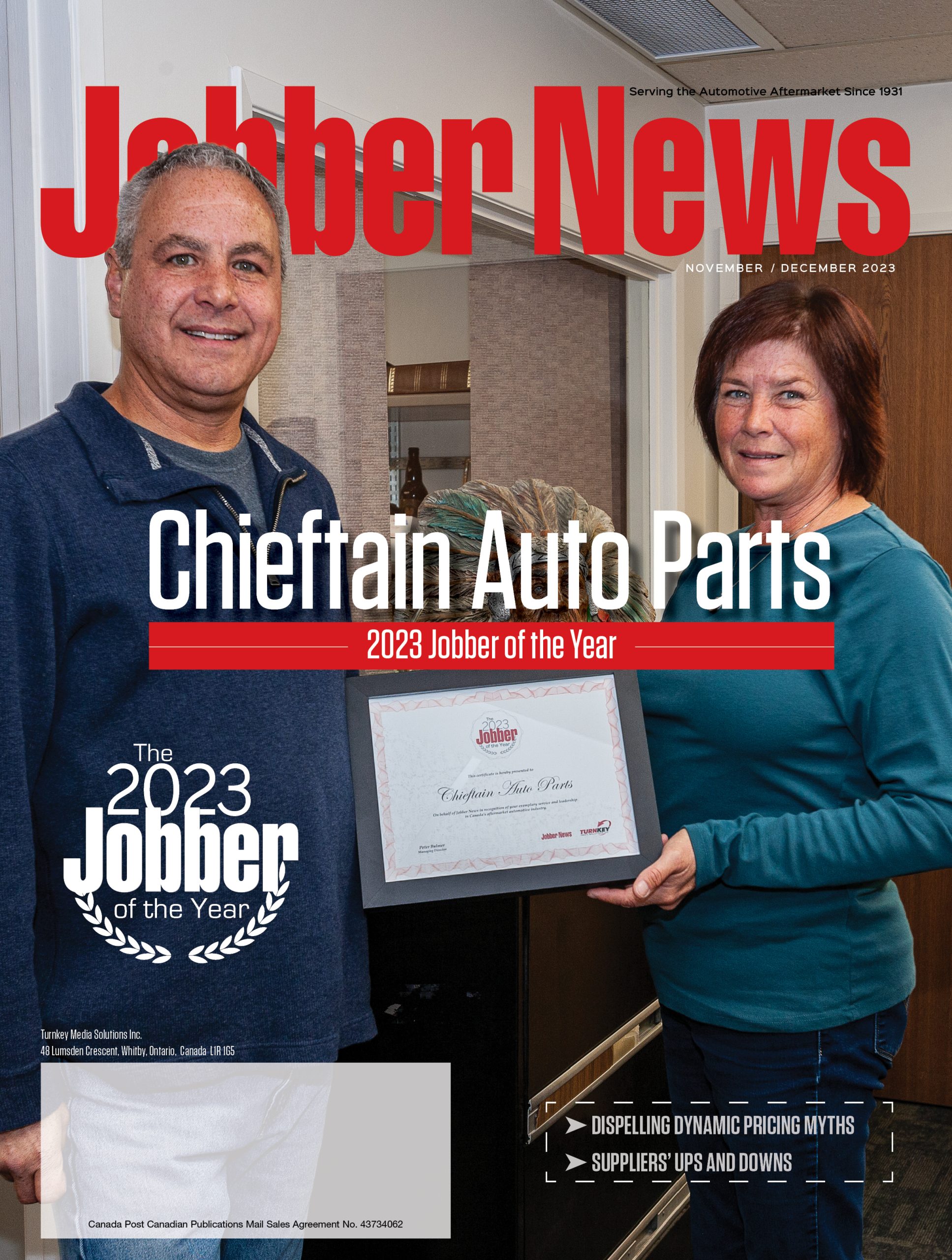
The Best Way to Grow Your Sales
If you're like most performance shop owners and managers you're always on the lookout for new ways to increase your sales.
If you’re like most performance shop owners and managers you’re always on the lookout for new ways to increase your sales.
You may think investing in advertising to bring in new customers is the best way to grow your sales. Advertising is important to building your brand, but that’s not the most important thing you need to do.
First you need to be sure you’re doing your best to create satisfied customers who keep doing business with you. That will naturally generate more sales.
Promoting your business without first looking at customer satisfaction and retention is like trying to fill a pool with a gaping hole in it. Think of every customer as a gallon of water. If you work really, really hard, you might be able to put water in the pool faster than it leaks out. But, if you want to go swimming and keep your water bills in check, patching the hole is a much more efficient solution.
In much the same way, if you bring in new customers but you don’t build loyalty, or they don’t refer your shop to their friends, you are not making the most of your marketing investment. Smart performance shops know that it costs much more to get a new customer than it does to keep an existing one.
Reducing your customer turnover by as little as five per cent can boost your profits by 25 to 80 per cent, according to a classic article in Harvard Business Review. How? It has to do with the lifetime value of a customer.
The lifetime value of a customer isn’t just about all the sales adding up to more dollars over time. Especially in a performance business, the amount of money a customer spends each time can grow, too.
First a customer might do a small job, say new valve covers or a new intake. As the customer’s confidence grows, often so does the number and value of each job, like porting heads or rebuilding an engine. With each sale your selling costs decline, since you spend less time convincing and more time doing the actual work. And, if you do good work, the referrals will flow – which is the final element of lifetime value.
As you can see, building customer loyalty can impact your bottom line in many ways: repeat business, bigger orders and new customer referrals. To build customer loyalty, you want to focus on increasing customer satisfaction.
Building Loyalty
I think I got more birthday cards this year from marketers than I did from family and friends. That’s not to say I don’t feel loved and appreciated. It just seems a lot more businesses love and appreciate me than I would have expected.
Communicating with your customer consistently is a great way to build loyalty. Doing a monthly or bimonthly mailing and/or emailing makes your customers feel connected to you. Mail a regular newsletter. Email coupons. And, of course, send birthday cards.
Email services like ConstantContact.com can easily and inexpensively help you keep in touch with your customers and prospects. These email services have ready-to-use templates and offer comprehensive reports to measure the success of your emails.
To keep in touch with customers you just need to collect their contact information so you can build a mail/email list.
Loyalty programs are another good way to show customer appreciation. You probably are part of at least one loyalty program, even if you’ve never heard the term before. It includes things like restaurant punch cards, airline mileage programs or credit card bonus points.
Beth and I have a Speedway gas station rewards card. I laugh at how often we’ll go out of our way to fill our vehicle – and our stomachs – at Speedway. So, although I design marketing programs, I’m not immune from being influenced by them.
Although a punch card may not work for you, you might offer special bonuses to customers when they reach certain spending levels. You could give them gift certificates good for future purchases. Or you could give away promotional gear as a thank you like shirts, hats or travel mugs with your logo on them.
The goal is simple: reward loyalty. Treat your best customers like VIPs.
Learn from Mistakes
Everyone makes mistakes. Most customers realize that and are willing to be forgiving, if you are proactive and respond promptly and attentively to their complaints. Ignore customer complaints at your own peril.
For every customer that complains, an average of 26 more customers won’t tell you that they are dissatisfied, according to a Research Institute of America (RIA) study for the White House Office of Consumer Affairs.
Only four per cent of unhappy customers will bother to complain – most will just leave quietly and never do business with you again. Why? Some people don’t want to make waves. Others don’t think it will make a difference.
Whatever the reason, it’s important to oil the squeaky wheels. And learn from them what you can do to increase your customer satisfaction. Successful shops don’t just do good work, they create happy customers.
The RIA study says that 70 per cent of complainers will do business with you again if the complaint is resolved – 95 per cent will stay loyal if they feel you resolved the problem quickly and completely.
It’s important to try to avoid treating a complaining customer as an adversary. Think of the complainer as an advocate representing other quietly dissatisfied customers. Listen despite their possible angry tone or harsh words to understand why they’re frustrated. Have a system to quickly resolve problems. And make sure everyone on your staff who deals with customers is trained and empowered to resolve simple problems.
One approach is what I call the Triple-A method:
- Avoid interrupting as the customer explains the problem. (Letting them vent can help diffuse the situation.)
- Acknowledge that you understand how your customer feels.
- Ask them what they believe would be a fair resolution. (In most situations, the customer will ask for less than you would have offered.)
Remember:
your customer has choices. Do everything you can to be the one he chooses.
Short Surveys
Want to build sales? Build your customer satisfaction.
Surveys are a great way to measure customer satisfaction. But long surveys can be overwhelming to customers who won’t take the time to complete them. And who on your staff really wants to tally up all those results?
Worst of all, according to another classic article in the Harvard Business Review, decisions based on these survey results “don’t necessarily correlate to profits or growth.”
So instead of a long survey, give them a very short survey that asks just two questions. The most important: “On a scale of One to Five, how likely are you to recommend us to a friend?” The next: “Why?”
The answer to the first question is what marketers call your Net Promoter Index. Statistics show that the more promoters you have, the better the chances of your sales growth. The reason is that anyone willing to put their neck out and refer you to a friend is truly satisfied. The more satisfied a customer, the more likely they are to talk you up.
Start by using that simple two-question survey. You can put the questions on a small, self-addressed, stamped postcard, or you can email your customer a quick two-question online survey. (SurveyMonkey.com offers free online surveys.)
Then, use your findings to improve your Net Promoter Index (customer satisfaction rating), and get more referrals.
Satisfied customers are your best source of continued growth. Continue to improve the way you do business and you’ll improve your profits, too.
Everyone’s Happy
Sometimes shop owners and managers become so focused on getting new customers that they risk alienating their current customers.
It’s easy to take loyal customers for granted and get excited about new ones. We’re often lulled into thinking sales growth is built
strictly on new customers. That’s rarely the case. Satisfied customers are the backbone of successful performance shops.
As we saw before, existing customers and referrals are usually more profitable than new ones. They’re usually cheaper to serve, since they need less educating. They know and trust you already and know what they want.
And loyal, satisfied customers are more open to cross-selling of your other services. Once you’ve built a relationship with a customer and earned their trust, they are more likely to turn to you for advice on performance parts and services.
Every one per cent that you reduce customer turnover is one per cent fewer new customers you need to meet your overall sales goals.
Most importantly, loyal customers are the most persuasive salespeople your shop can “hire.” Their enthusiasm for your work is genuine and often contagious. Referrals tend to be better-informed, more trusting and ready to buy. And if you treat your customers right, generating these referrals costs you little or nothing.
How are you treating your customers? Are you building loyalty? Are you generating referrals? How can you improve? The answers can help improve your bottom line.
.png)





Have your say: